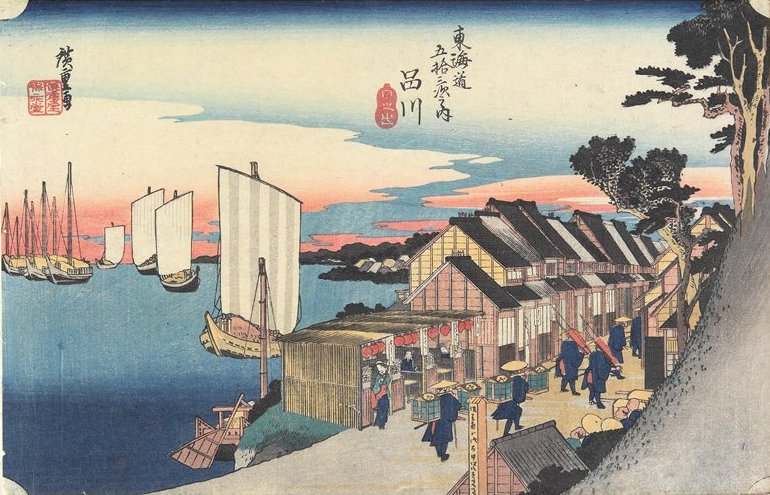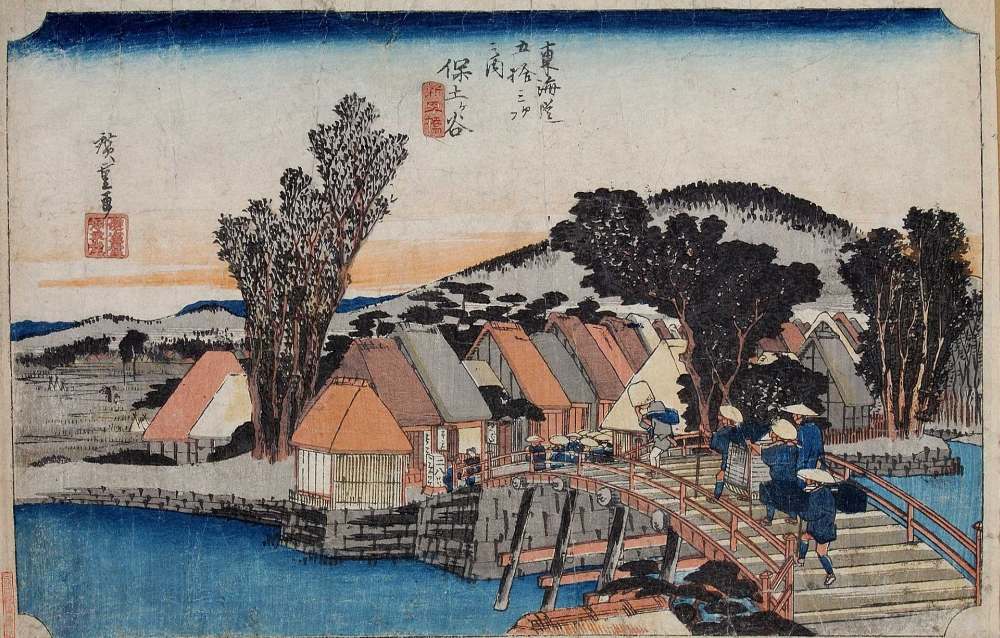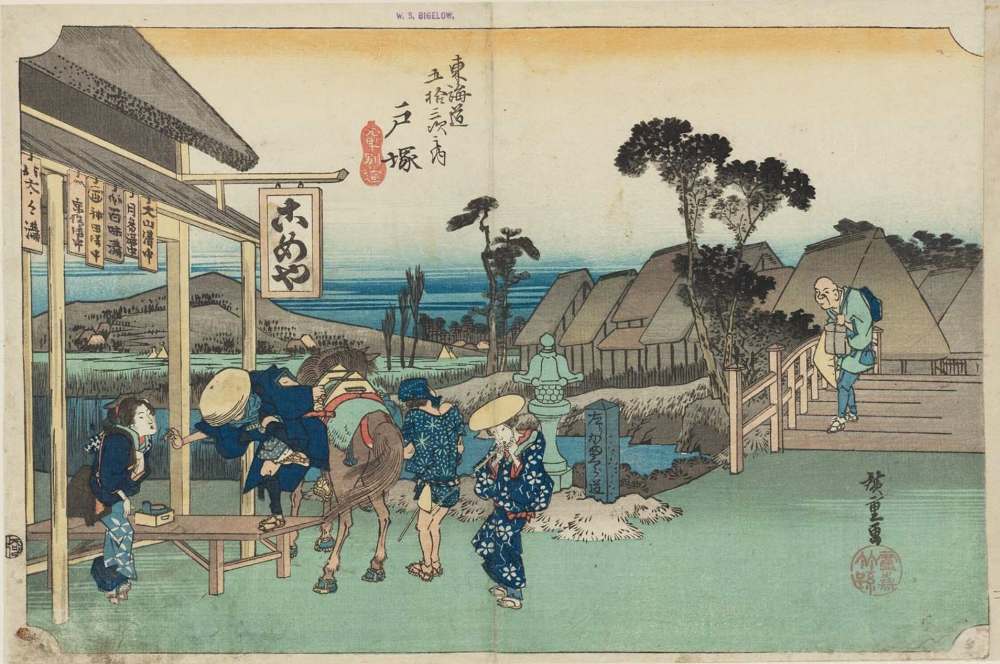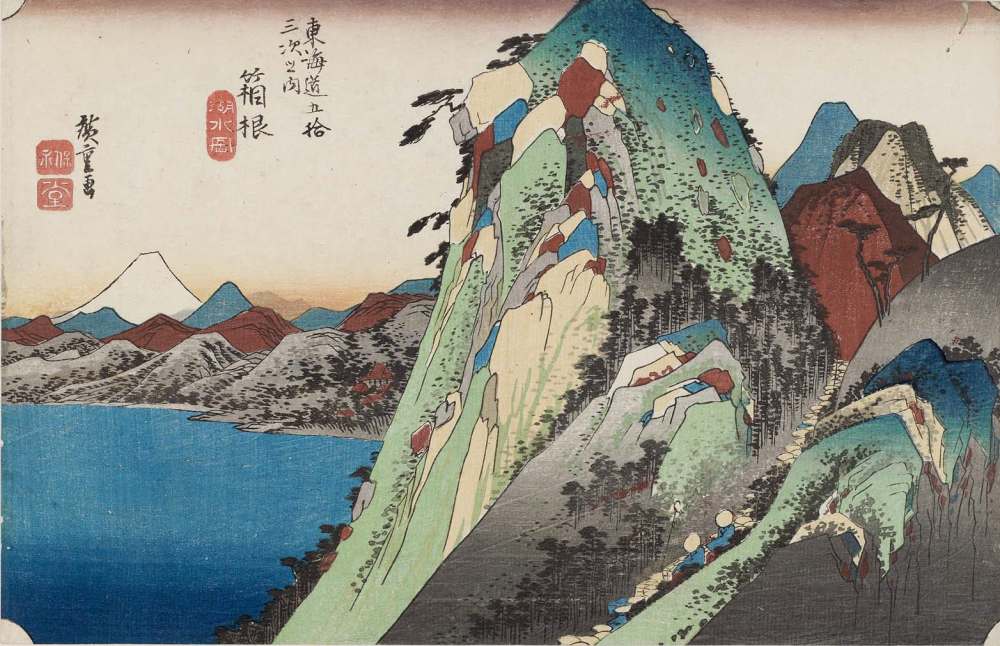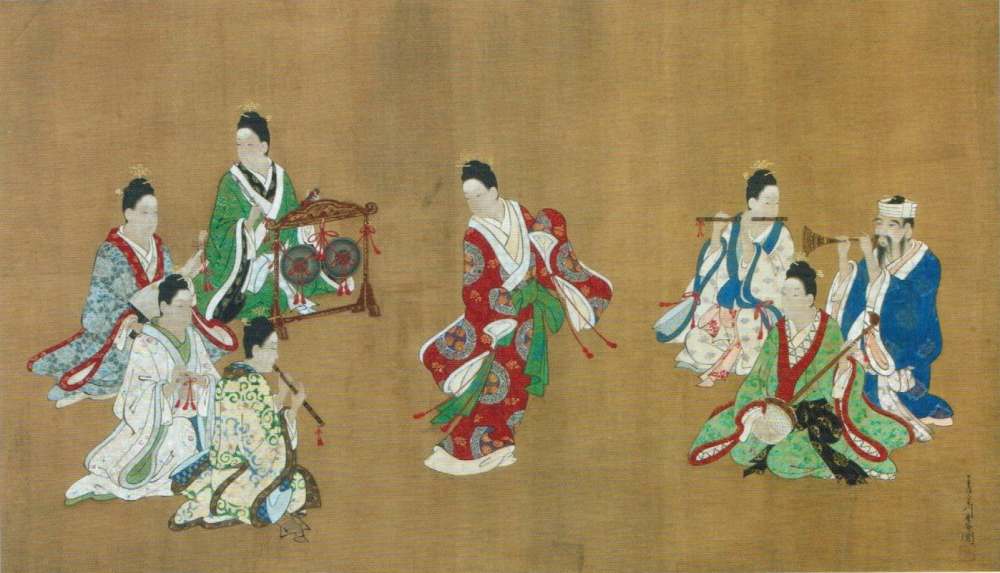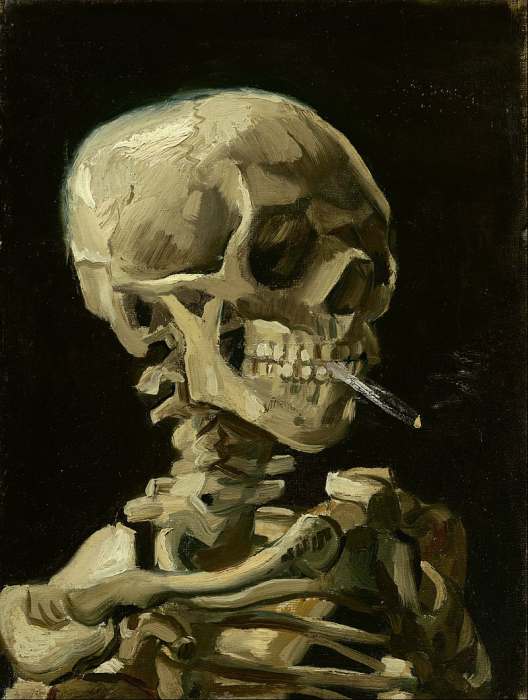Ukiyo-e, a term which translates to “pictures of the floating world,” refers to a unique genre of Japanese art that flourished during the Edo period. Characterized by its vibrant woodblock prints and paintings, Ukiyo-e captures fleeting moments of leisure and beauty in everyday life. This art form is renowned for its intricate details, vivid colors, and innovative compositions, showcasing scenes ranging from serene landscapes to lively urban spectacles.
Edo period in Japan
The Edo period, spanning from 1603 to 1868, was a time of relative peace, political stability, and isolation from the outside world under the rule of the Tokugawa shogunate. It was an era marked by the rise of a prosperous merchant class, the development of distinct urban cultures in cities like Edo (modern-day Tokyo), Osaka, and Kyoto, and a flourishing of arts and culture. During this period, Ukiyo-e emerged not just as an art form but as a cultural phenomenon, reflecting the changing tastes, interests, and everyday lives of Japan’s burgeoning urban population.
Development of Ukiyo-e During the Edo Period
Ukiyo-e originated in the 17th century, initially as simple monochromatic prints and paintings that depicted the everyday life and entertainments of Edo’s common folk. The term “ukiyo,” originally referring to the Buddhist concept of the transitory nature of life, was reinterpreted by the people of Edo to represent a world of fleeting beauty and momentary pleasures. As the demand for these images grew, artists began to explore more complex printing techniques, leading to the development of polychrome prints, or “nishiki-e,” by the mid-18th century. This period saw Ukiyo-e evolving from purely decorative works to a sophisticated art form that captured the dynamic spirit of the Edo period.
Key Artists and Their Contributions
Several artists played pivotal roles in the evolution and popularization of Ukiyo-e:
Hishikawa Moronobu (1618-1694):
Active during the early Edo period, Moronobu’s extensive body of work laid the groundwork for future generations of Ukiyo-e artists. He was a versatile artist, producing not only woodblock prints but also hand-painted scrolls and books. Moronobu’s art vividly depicted the lively urban culture of Edo, including scenes of kabuki theater, the pleasure quarters, and the daily life of the city’s inhabitants. His pioneering efforts in monochrome and later polychrome prints helped establish the stylistic and thematic foundations of Ukiyo-e.
Suzuki Harunobu (1725-1770):
Suzuki Harunobu is renowned for his significant contributions to the development of full-color printing in Ukiyo-e, known as nishiki-e, in the mid-18th century. Harunobu’s innovative use of multiple woodblocks for separate colors revolutionized the art form, allowing for a richness and depth previously unattainable. His prints often featured delicate, ethereal subjects, including beautiful women, lovers from classical literature, and scenes of everyday life. Harunobu’s work is distinguished by its gentle grace and poetic sensibility, setting new aesthetic standards in Ukiyo-e.
Katsushika Hokusai (1760-1849):
Katsushika Hokusai is one of the most famous Ukiyo-e artists, celebrated for his profound impact on the genre and his influence on Western art. Hokusai’s best-known work, “The Great Wave off Kanagawa,” is iconic, showcasing his mastery of form and his dynamic use of line. His series, “Thirty-Six Views of Mount Fuji,” captures the enduring spirit of Japan’s landscape with innovative composition and vibrant colors. Hokusai’s explorations extended beyond landscapes to include a wide array of subjects, from scenes of daily life to imaginative depictions of the supernatural.
Utagawa Hiroshige (1797-1858):
Utagawa Hiroshige was a master of the landscape print, whose work is celebrated for its lyrical beauty and atmospheric depth. Hiroshige’s series, such as “The Fifty-three Stations of the Tōkaidō” and “One Hundred Famous Views of Edo,” capture the essence of Japan’s natural and urban environments with a remarkable sensitivity to season, weather, and light. His innovative use of perspective and composition brought a new level of emotional and poetic depth to Ukiyo-e landscapes.
Evolution of Styles and Themes
The themes and styles of Ukiyo-e evolved significantly over time:
Early Period: Focused on courtesans and kabuki actors, reflecting the entertainment districts of Edo.
Mid-Period: With the advent of nishiki-e, there was a shift towards more elaborate and colorful depictions of everyday life, festivals, and famous landmarks.
Late Period: Landscapes and nature became dominant themes, with artists like Hokusai and Hiroshige pushing the genre to new heights of artistic expression.
Throughout its development, Ukiyo-e remained deeply connected to the cultural and social currents of Edo Japan, adapting to reflect the changing tastes and interests of its audience. From the pleasure quarters to the natural beauty of the Japanese countryside, Ukiyo-e artists captured the essence of Edo period life, leaving a legacy that continues to captivate and inspire.
Cultural Significance
Representation of the “Floating World” Concept
Ukiyo-e art embodies the concept of the “floating world,” a term that captures the ephemeral nature of human life and the pursuit of pleasure within the transient world. This philosophy, deeply rooted in Buddhist ideas, is vividly portrayed in Ukiyo-e, where the pleasures of the moment are celebrated, from the allure of the kabuki theatre to the fleeting beauty of seasonal landscapes. Through its depictions, Ukiyo-e invites viewers to momentarily escape from the worries of daily life into a world of beauty and enjoyment.
Themes Explored in Ukiyo-e
Ukiyo-e explored a wide array of themes that provide a window into the cultural pursuits and popular interests of the Edo period. Illustrations of kabuki actors in dramatic poses capture the theatrical world’s vibrancy. Sumo wrestlers, depicted in the midst of their bouts, convey the excitement of this traditional sport. Beautiful women, or “bijin-ga,” are often shown in moments of everyday elegance, highlighting contemporary beauty standards and fashion. Landscapes, particularly those by artists like Hokusai and Hiroshige, offer breathtaking views of Japan, from the bustling streets of Edo to the serene vistas of the countryside. Historical tales and folklore are also common, illustrating the rich tapestry of Japan’s past.
Influence on Japanese Aesthetics and Art
The influence of Ukiyo-e on Japanese aesthetics and art is profound. Its emphasis on simplicity, attention to detail, and the use of vibrant colors have left an indelible mark on Japanese art, influencing everything from modern manga to animation. Ukiyo-e’s approach to composition, with its innovative use of perspective and framing, has also contributed to the development of visual storytelling in Japan. The art form’s legacy is seen in the enduring appreciation for beauty in everyday moments and the natural world, principles that continue to resonate in Japanese culture and art today.
Social Aspects
Reflections of Edo Society and Its Classes
Ukiyo-e art offers a unique lens into the hierarchical structure and social dynamics of Edo society. By depicting scenes from the lives of samurai, merchants, artisans, and courtesans, these prints reflect the diverse social strata and their distinct roles within the period’s cultural and economic landscape. Interestingly, despite the samurai’s top status, Ukiyo-e frequently celebrated the lives of commoners and the flourishing merchant class, highlighting a shift in cultural influence and the emergence of a vibrant urban culture.
Just as Ukiyo-e prints offer a window into the cultural and artistic life of Edo period Japan, our latest post on What Are Dogū Figures and What Do They Tell Us About Ancient Japan? sheds light on the earlier Jōmon period through the intriguing world of Dogū figures. Discover how these ancient artifacts reveal the beliefs, practices, and artistry of a civilization foundational to Japanese history.
Role of Ukiyo-e in Popularizing Entertainment and Leisure Activities
Ukiyo-e played a pivotal role in popularizing and disseminating information about various forms of entertainment and leisure activities that were burgeoning in urban centers. By capturing and showcasing scenes from kabuki theater, pleasure districts like Yoshiwara, tea houses, and festivals, these prints acted as both advertisements and visual records. They informed the populace about the latest plays, fashion trends, and seasonal events, thus fueling the Edo populace’s fascination with entertainment and leisure pursuits.
Insights into the Lifestyles and Fashion of the Period
Through its detailed portrayal of daily life and cultural practices, Ukiyo-e provides invaluable insights into the lifestyles and fashion of the Edo period. The prints serve as a historical record of clothing styles, interior design, and even beauty standards of the time. By illustrating how people from different social classes dressed, interacted, and engaged in daily activities, Ukiyo-e offers a vivid picture of the period’s aesthetic sensibilities and social norms. The attention to detail in these artworks allows modern viewers to understand the intricacies of Edo-period fashion, from the patterns on a kimono to the style of a hairpin, revealing much about the era’s material culture and artistic preferences.
Economic Factors
Ukiyo-e as a Commercial Art Form
Ukiyo-e was not just an artistic endeavor but also a significant commercial venture in Edo Japan. These woodblock prints were produced for the mass market, making art accessible to a broader segment of society beyond the elite. The affordability and wide range of subjects appealed to the tastes and interests of the burgeoning middle class, including merchants and townspeople, thus creating a thriving market for these captivating images.
The Role of Publishers, Artists, and Woodblock Carvers in the Production Process
The creation of Ukiyo-e was a collaborative effort that involved several key players: the artist, who designed the images; the carver, who painstakingly etched the designs into wood blocks; and the printer, who applied ink to the blocks to produce the prints. Publishers played a crucial role by financing the projects, deciding on the themes based on market demand, and distributing the finished prints. This division of labor allowed for the efficient production of prints and innovation in techniques, contributing to the evolution and popularity of Ukiyo-e.
Ukiyo-e’s Impact Beyond Japan
Ukiyo-e left an indelible mark on Western art, particularly influencing the Impressionist and Post-Impressionist movements in the late 19th and early 20th centuries. European artists were captivated by the distinct aesthetic of Ukiyo-e prints, which emphasized flat areas of color, minimalistic yet expressive compositions, and unique perspectives. Artists like Claude Monet, Vincent van Gogh, and Edgar Degas drew inspiration from these Japanese prints, incorporating elements of Ukiyo-e’s style into their work. This cross-cultural exchange, known as Japonisme, not only enriched Western art but also signaled a broader appreciation and integration of Japanese aesthetics in the global art scene.
Final Thoughts
Ukiyo-e, a luminous facet of Edo period Japan, transcends its historical moment to illuminate the intricate interplay between art, society, and economy of its time, while casting a long shadow over global art and culture. As a bridge between the past and the present, the East and the West, Ukiyo-e serves as a testament to the enduring power of art to reflect societal values, shape aesthetic sensibilities, and foster cross-cultural dialogue. Its legacy, enduring far beyond the confines of its era, continues to inspire and inform, highlighting the timeless pursuit of beauty and the profound connections that art can forge across diverse worlds.

